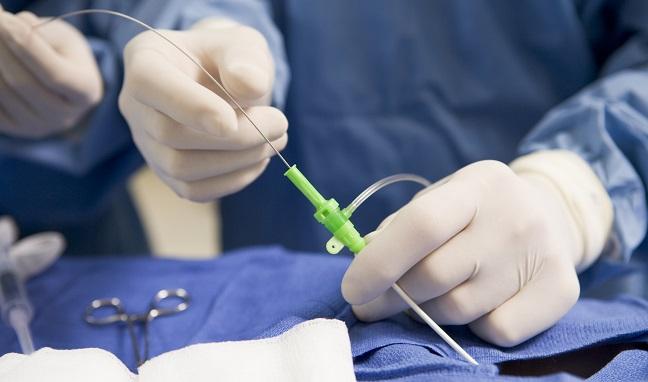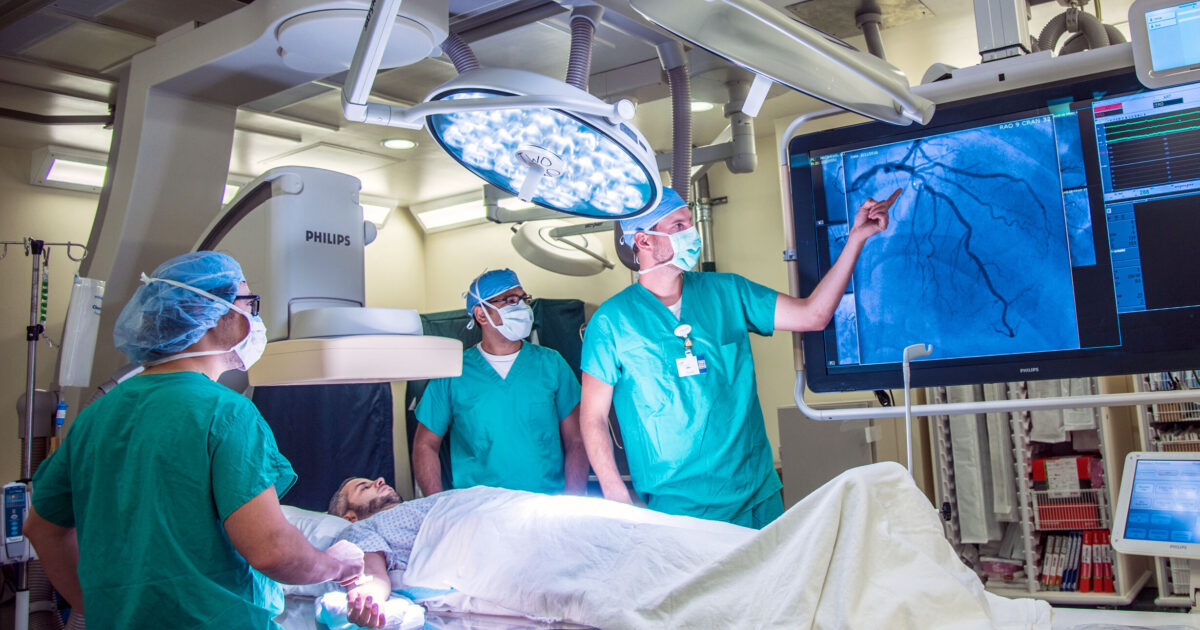Signs you should see a Cardiologist near me now
Signs you should see a Cardiologist near me now
Blog Article
Understanding the Importance of Cardiology in Modern Healthcare Services
Cardiology plays a critical duty in modern medical care, especially as heart problem proceeds to be the leading source of mortality worldwide. Breakthroughs in diagnostics and treatment have actually changed client care, making it possible for earlier treatments and enhanced outcomes. The change towards preventive cardiology empowers individuals to manage their health proactively. As modern technology continues to progress, the assimilation of innovative solutions may additionally redefine cardiology's effect on public wellness, prompting a more detailed assessment of emerging patterns and their ramifications.
The Prevalence of Heart Condition and Its Effect On Public Health And Wellness
Although heart problem continues to be the leading cause of death internationally, its influence expands far beyond specific people to impact public health and wellness systems and economic climates. The high prevalence of cardiovascular disease places a considerable stress on healthcare sources, demanding raised funding for therapy, rehab, and prevention programs. Public health efforts should deal with threat aspects such as excessive weight, smoking cigarettes, and less active lifestyles, which add considerably to the increasing incidence of heart conditions.Moreover, the economic concern related to cardiovascular disease is immense, encompassing not just direct clinical costs but likewise indirect expenses connected to shed performance and early death. Communities encounter challenges in managing these prices, usually leading to variations in medical care access and results. As the population ages and lifestyle-related threats continue to escalate, the necessity for reliable cardiology interventions ends up being extremely important. Consequently, addressing cardiovascular disease is not only an issue of private health yet additionally a crucial public health priority.
Advancements in Cardiac Diagnostics and Imaging Techniques
Current innovations in cardiac diagnostics and imaging methods have actually transformed the area of cardiology, improving the ability to keep an eye on and identify heart problem. Methods such as cardiac MRI, CT angiography, and echocardiography have actually ended up being increasingly sophisticated, giving comprehensive images of cardiac structures and features. These modalities permit for the very early identification of conditions like coronary artery condition, heart failing, and valvular disorders.Moreover, innovations in non-invasive diagnostics, such as wearable technology and remote tracking gadgets, have encouraged people and doctor. These devices promote real-time tracking of heart rhythms and other important indicators, resulting in prompt treatments. Furthermore, expert system is being incorporated into imaging evaluation, enhancing accuracy and efficiency in medical diagnosis.
Technologies in Therapy Alternatives for Heart Issues
Current advancements in cardiology have brought about significant technologies in treatment alternatives for heart disease. These consist of advanced surgical strategies that boost procedural results and arising medicines that offer brand-new methods for treatment. As the field evolves, these technologies play an essential duty in enhancing individual care and end results.
Advanced Surgical Techniques
Developments in surgical methods have actually changed the landscape of cardiology, supplying brand-new wish for patients with heart disease. Minimally intrusive procedures, such as catheter-based interventions, have actually substantially lowered healing times and health center stays. Techniques like robotic-assisted surgical treatment improve precision, permitting doctors to navigate intricate anatomical frameworks with higher precision. Moreover, improvements in imaging innovation help with real-time visualization during procedures, enhancing end results. Transcatheter aortic shutoff replacement (TAVR) exemplifies a breakthrough in treating aortic constriction, allowing shutoff replacement without open-heart surgical procedure. In addition, hybrid methods that integrate surgical and catheter-based methods offer tailored services for various cardiac concerns. These innovative surgical strategies not only enhance client safety and security however additionally broaden treatment choices, highlighting the important duty of technology in modern cardiology practices.
Emerging Medicines and Treatments
As the landscape of cardiology proceeds to develop, emerging medications and treatments play an essential duty in boosting treatment alternatives for heart conditions. Developments such as unique anticoagulants and progressed lipid-lowering agents have changed the monitoring of heart diseases, considerably lowering individual morbidity and death. Furthermore, the growth of genetics therapies and regenerative medication supplies appealing avenues for treating problems previously deemed incurable. Professional tests are consistently revealing the efficiency of these treatments, pushing the boundaries of conventional therapies. The assimilation of electronic health modern technologies facilitates personalized medicine, allowing for tailored therapy strategies based on genetic and way of life factors. Jointly, these innovations underscore the dynamic nature of cardiology, enhancing individual end results and redefining criteria of treatment in modern health care.
The Duty of Preventive Cardiology in Patient Care
Preventative cardiology plays an important function in client treatment by focusing on the recognition of risk factors that contribute to heart disease. Through lifestyle adjustment techniques and early detection techniques, doctor can efficiently decrease the occurrence of cardio occasions - Cardiologist near me. This aggressive method not just improves person outcomes however likewise promotes lasting health
Danger Factor Recognition
While heart diseases remain a leading root cause of morbidity and mortality worldwide, effective danger factor recognition works as a foundation of preventative cardiology. Determining risk aspects such as hypertension, hyperlipidemia, diabetic issues, and family members background is crucial for very early intervention. Healthcare experts use various screening techniques to evaluate these factors, permitting customized safety nets. In addition, comprehending a person's way of Home Page life selections, such as smoking and physical inactivity, additionally notifies danger analyses. This thorough analysis allows medical professionals to develop tailored treatment plans targeted at mitigating dangers. By prioritizing threat aspect identification, medical care systems can enhance person end results and lower the general problem of heart diseases, eventually adding to improved public wellness strategies and source allowance.
Way Of Life Modification Strategies
A wide range of researches highlights the vital function of way of life modification techniques in lowering cardiovascular condition danger. These techniques incorporate nutritional modifications, raised exercise, smoking cigarettes cessation, and weight monitoring. By taking on a heart-healthy diet rich in fruits, veggies, entire grains, and lean healthy proteins, people can decrease cholesterol levels and blood pressure. Regular exercise enhances the heart and enhances overall cardiovascular health. In addition, giving up smoking considerably reduces the danger of cardiovascular disease and enhances recovery prices for those with current conditions. Weight administration useful reference better adds to cardiovascular health and wellness by mitigating various other danger elements such as diabetes mellitus and hypertension. Executing these way of life alters not just advertises private health yet additionally works as a cornerstone of preventive cardiology in individual treatment.
Early Detection Methods
Way of living adjustments greatly contribute to reducing heart disease dangers, however they are most efficient when combined with very early detection methods. Precautionary cardiology emphasizes the importance of identifying prospective heart issues before they escalate right into serious conditions. Techniques such as high blood pressure tracking, cholesterol testing, and advanced imaging technologies like echocardiograms play essential functions in reviewing cardio wellness. Biomarkers and genetic testing likewise boost the precision of early discovery, permitting for tailored preventative strategies. Normal cardiac threat assessments encourage doctor to intervene proactively, possibly avoiding heart strikes and strokes (Cardiology care). By incorporating these early discovery approaches into routine care, individuals can take advantage of timely way of living treatments and targeted treatments, eventually boosting outcomes and improving top quality of life
Integrating Technology Into Cardiology Practices
As improvements in technology remain to improve different areas, the integration of ingenious devices and systems right into cardiology techniques has ended up being necessary for enhancing client treatment and results. Telemedicine systems allow cardiologists to check patients remotely, improving accessibility to care while lowering the burden on healthcare facilities. Wearable devices, such as smartwatches, allow constant heart rate tracking, signaling both patients and physicians to potential issues in real-time. Additionally, expert system (AI) is being made use of to examine vast amounts of heart information, aiding in very early diagnosis and customized treatment strategies. Advanced imaging methods, including 3D echocardiography, enhance visualization of heart structures, bring about a lot more exact interventions. Electronic health documents (EHRs) simplify individual info administration, ensuring that cardiologists have prompt accessibility to vital data. Together, these technical innovations are transforming cardiology, promoting aggressive administration and improved wellness results for patients with cardio conditions.
The Importance of Individual Education and Interaction
Patient education and learning and engagement play an essential role in the administration of cardio health and wellness. By outfitting clients with expertise regarding their problems, treatment choices, and way of living adjustments, health care service providers equip people to take an active function in their treatment. This proactive technique can bring about improved adherence to recommended drugs, nutritional changes, and exercise routines, inevitably decreasing the danger of complications.Engagement additionally cultivates a strong patient-provider relationship, motivating open interaction and trust. When individuals really feel educated and involved, they are most likely to voice worries and ask inquiries, which can lead to better clinical results. Additionally, instructional sources, such as workshops or digital platforms, can enhance understanding and promote self-management strategies. In general, prioritizing client education and learning and interaction is crucial for boosting cardiovascular health and wellness, enhancing lifestyle, and lowering medical care prices linked with heart diseases.
Future Patterns in Cardiology and Their Possible Impact

Often Asked Inquiries
What Way Of Living Modifications Can Decrease Cardiovascular Disease Risk?
The existing concern addresses way of life changes that can greatly lower cardiovascular disease risk. Cardiology Jupiter. Adopting a well balanced diet plan, taking part in normal exercise, maintaining a healthy and balanced weight, handling stress, and preventing tobacco can notably enhance cardiovascular wellness
Exactly How Can I Recognize Very Early Signs of Heart Troubles?
Recognizing very early indications of heart problems entails monitoring signs and symptoms such as breast discomfort, shortness of breath, exhaustion, and irregular heart beat. Timely understanding of these indicators can motivate necessary clinical evaluation and treatment for better results.
What Are the Distinctions Between Cardiologists and Heart Surgeons?
The distinctions between cardiologists and heart surgeons hinge on their duties; cardiologists mainly handle and detect i loved this heart disease with non-invasive approaches, while cardiac doctors carry out operations to correct structural heart concerns. Each plays a vital, unique function.

Exactly how Typically Should I Get My Heart Health Checked?
The regularity of heart wellness checks varies based on specific danger elements. Typically, adults need to go through assessments each to 2 years, while those with status quo might require even more regular assessments as advised by medical care experts.
What Duty Does Genetics Play in Heart Problem Danger?
Genetics greatly influences cardiovascular disease risk, with domestic patterns suggesting inherited problems. Specific genetics can predispose people to hypertension, cholesterol concerns, and various other cardiovascular problems, highlighting the value of genetic testing in evaluating heart wellness. Heart disease continues to be the leading cause of fatality globally, its effect expands far beyond individual people to affect public wellness systems and economies. Public wellness initiatives need to address danger aspects such as obesity, cigarette smoking, and less active way of lives, which add greatly to the increasing occurrence of heart conditions.Moreover, the financial burden connected with heart condition is immense, encompassing not only direct medical costs yet also indirect costs associated to shed productivity and premature mortality. Preventive cardiology plays a vital duty in patient care by focusing on the identification of danger aspects that add to heart condition. Artificial intelligence (AI) and device discovering are boosting diagnostics and patient monitoring, allowing early detection of heart illness. The differences between cardiologists and cardiac specialists exist in their functions; cardiologists mostly take care of and detect heart problems via non-invasive approaches, while heart specialists do medical procedures to fix structural heart issues.
Report this page